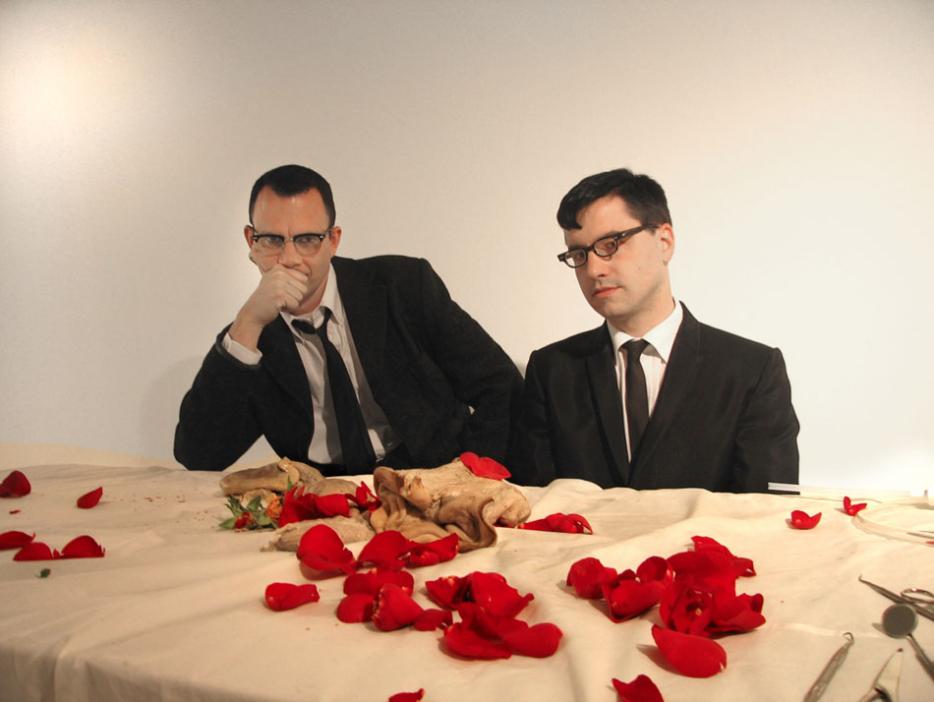After nearly two decades as duo and couple, Matmos have established a template of conceptualism you can dance to. Their 2001 album A Chance to Cut Is a Chance to Cure transfigured surgical noises into avant-garde electronica. On The Rose Has Teeth in the Mouth of the Beast, the pair paid irreverent tribute to some queer heroes with fetishistically appropriate samples: sequins and steam for onetime bathhouse DJ Larry Levan, a chaotic simulated banquet for Bavaria’s King Ludwig II, squirming snails for Patricia Highsmith (she kept them as pets). Even the major exception to this rule, their most recent solo LP Supreme Balloon, produced an inadvertent theme; made using nothing but synthesizers, it’s completely, beautifully artificial.
The Marriage of True Minds doesn’t represent a departure so much as a nimble pirouette. For their new album, Drew Daniel and M. C. Schmidt (a.k.a. Matmos) subjected over 50 volunteers to the Ganzfeld technique, a parapsychological method of divining ESP. Having placed the participants under mild sensory deprivation, Daniel attempted to beam the nonexistent record inside their heads. Whatever they reported seeing or hearing mid-session would somehow be brought to bear on the music: triangles came up a lot, so they make appearances as both lyrical image and instrument. It’s an abstraction of the group’s typical process.
Reading the Tumblr where Matmos posted these experimental transcripts accounts for the album’s stream-of-consciousness quality: “Love in darkness. Machine noise. Some speaking. Smoke. Whispering. A derive around the city. Fresh fruit in your hand. A city that works, functions. Sort of skipping in the pavement.” Yet The Marriage might also be their most accessible release, a triathlon of memorable beats and vocal styles—that supernatural focus group often heard singing across dimensions. (Daniel and Schmidt are charmingly blasé about whether they used telepathy in earnest.) According to one interview, they put the musique-concrete outlier “Ross Transcript” on the LP simply to demonstrate that they were still capable of it.
I saw the duo perform in Toronto on Valentine’s Day, re-enacting a Ganzfeld session live for yet another layer of occult metaphysics. Daniel noted that he and Schmidt are coming up on their 20th anniversary celebration before decrying the oppressive aspects of couple-as-mandated-unit, with a shout-out to U of T professor Michael Cobb’s book Single. That’s just the sweet cultural-studies nerd he is, but I heard some thematic relevance too. The idea of telepathy seems both romantic and creepy, disturbingly intimate, an ultimate self-annihilation; identical twins are popular in psychic experiments and horror movies alike. The Marriage of True Minds closes with “ESP,” an eight-minute-long track that shifts from death metal to industrial noise to blissful pop jouissance. Matmos begin to sing, as they almost never do themselves, and their voices come in computerized unison: “Do you believe in ESP? / Well I do and I’m trying to get through to you / So if you’re picking up on me / Then you know just what to do.” But the music suddenly cuts out, and Schmidt adds, or admonishes: “So…think.”






